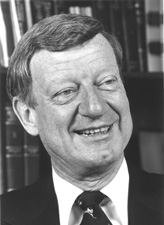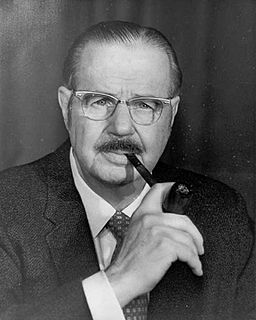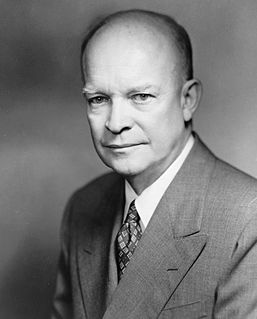
The United States Senate elections of 1928 were elections that coincided with the presidential election of Republican Herbert Hoover. The strong economy helped the Republicans to gain seven seats from the Democrats.

The United States Senate elections of 1926 were elections for the United States Senate that occurred in the middle of Republican President Calvin Coolidge's second term. The Republican majority was reduced by six seats.

The 1982 United States House of Representatives elections was an election for the United States House of Representatives held on November 2, 1982, in the middle of President Ronald Reagan's first term, whose popularity was sinking due to economic conditions under the 1982 recession. The President's Republican Party lost seats in the House, which could be viewed as a response to the President's approval at the time. Unlike most midterm election cycles, the number of seats lost—26 seats to the Democratic Party—was a comparatively large swap. It included most of the seats that had been gained the previous election, cementing the Democratic majority. Coincidentally, the number of seats the Democratic picked up (26), was the exact amount the Republicans needed to win the House majority.

Although the 17th Amendment was not passed until 1913, some states elected their Senators directly before its passage. Oregon pioneered direct election and experimented with different measures over several years until it succeeded in 1907. Soon after, Nebraska followed suit and laid the foundation for other states to adopt measures reflecting the people's will. By 1912, as many as 29 states elected senators either as nominees of their party's primary or in conjunction with a general election.
The United States Senate elections of 1890 and 1891 were elections in which the Republican Party lost four seats in the United States Senate, though still retaining a slim majority. That majority was increased, however, upon the admission of two more states with Republican senators.

The Mayoral election of 1933 in Pittsburgh, Pennsylvania was held on Tuesday, November 6, 1933. In a realigning election, Democrats regained control of the mayor's office for the first time in 28 years; they have not relinquished this position since. The incumbent mayor, John Herron of the Republican Party chose to run for his first full term. Herron had been elevated to the executive office from his position as city council president after Charles H. Kline resigned over a fiscal scandal; he inherited a party whose once efficient machinery was in crisis. Democrats, led by new powerful grassroots organizer David Lawrence selected William McNair, an idealistic and outspoken attorney as their candidate. With the beginnings of the New Deal being set into place, Pittsburgh's strong labor community moved rapidly toward the Democrats, creating a huge shift in voting patterns and allowing McNair to win.
The United States Senate elections of 1860 and 1861 were elections corresponding with Abraham Lincoln's election to the presidency. The nascent Republican Party increased their Senate seats in the general elections, and after southern Democrats withdrew to join the Confederacy, Republicans gained control of the United States Senate. To establish a quorum with fewer members, a lower total seat number was taken into account.

The 2012 United States Senate election in Pennsylvania was held on November 6, 2012, alongside a presidential election, other elections to the United States Senate in other states, as well as elections to the United States House of Representatives and various state and local elections. Incumbent Democratic U.S. Senator Bob Casey, Jr. ran for and won re-election to a second term, defeating Republican nominee Tom Smith, and Libertarian nominee Rayburn Smith.

The 1988 United States Senate election in Delaware was held on November 8, 1988. Incumbent Republican U.S. Senator William V. Roth won reelection to a third term.

The 1970 United States Senate election in Pennsylvania was held on November 3, 1970. Incumbent Republican U.S. Senator Hugh Scott won re-election, defeating Democratic nominee William Sesler.

The 1962 United States Senate election in Pennsylvania was held on November 6, 1962. Incumbent Democratic U.S. Senator Joseph S. Clark, Jr. successfully sought re-election to another term, defeating Republican nominee James E. Van Zandt. A Democratic U.S. Senator would not be re-elected in Pennsylvania again until 2012. As of 2019, this is the last time the Democrats have won the Class 3 Senate Seat from Pennsylvania.

The 1926 United States Senate election in Pennsylvania was held on November 2, 1926. Incumbent Republican George W. Pepper, who was appointed following the death of Boies Penrose, was defeated for re-nomination by William Scott Vare. Vare won the election, defeating Democratic opponent William Bauchop Wilson. He was not permitted to assume office, however, until an investigation was conducted into possible election fraud and corruption. Vare was ultimately unseated in December 1929 by the Senate, following charges of corruption.

The 1934 United States Senate election in Pennsylvania was held on November 6, 1934. Incumbent Republican U.S. Senator David A. Reed sought re-election to another term, but was defeated by Democratic nominee Joseph F. Guffey.

The 1922 United States Senate election in Pennsylvania was held on November 7, 1922. Incumbent Republican U.S. Senator David A. Reed, who was appointed in August 1922 to fill the vacancy created by the death of William E. Crow, was elected both to complete the remainder of Crow's term, ending in March 1923, and to a full six-year term in his own right, beginning upon the expiration of Crow's term.

The 1916 United States Senate election in Pennsylvania was held on November 7, 1916. Incumbent Republican U.S. Senator George T. Oliver was not a candidate for re-election. The Republican nominee, Philander C. Knox defeated Democratic nominee Ellis C. Orvis.
The 2014 United States House of Representatives elections in Georgia were held on Tuesday, November 4, 2014, to elect the 14 U.S. Representatives from the state of Georgia, one from each of the state's 14 congressional districts. The elections coincided with the elections of other federal and state offices, including Governor of Georgia and U.S. Senator.

The 1956 United States presidential election in Massachusetts took place on November 6, 1956, as part of the 1956 United States presidential election, which was held throughout all contemporary 48 states. Voters chose sixteen representatives, or electors to the Electoral College, who voted for president and vice president.

The 2018 United States Senate election in Pennsylvania took place on November 6, 2018, to elect a member of the United States Senate to represent the State of Pennsylvania, concurrently with other elections to the United States Senate, elections to the United States House of Representatives, and various state and local elections. The primary elections were held on May 15.

The 1928 United States Senate election in Minnesota took place on November 6, 1928. Incumbent Farmer-Labor U.S. Senator Henrik Shipstead defeated his Republican challenger, former St. Paul mayor Arthur E. Nelson, to win a second term.















